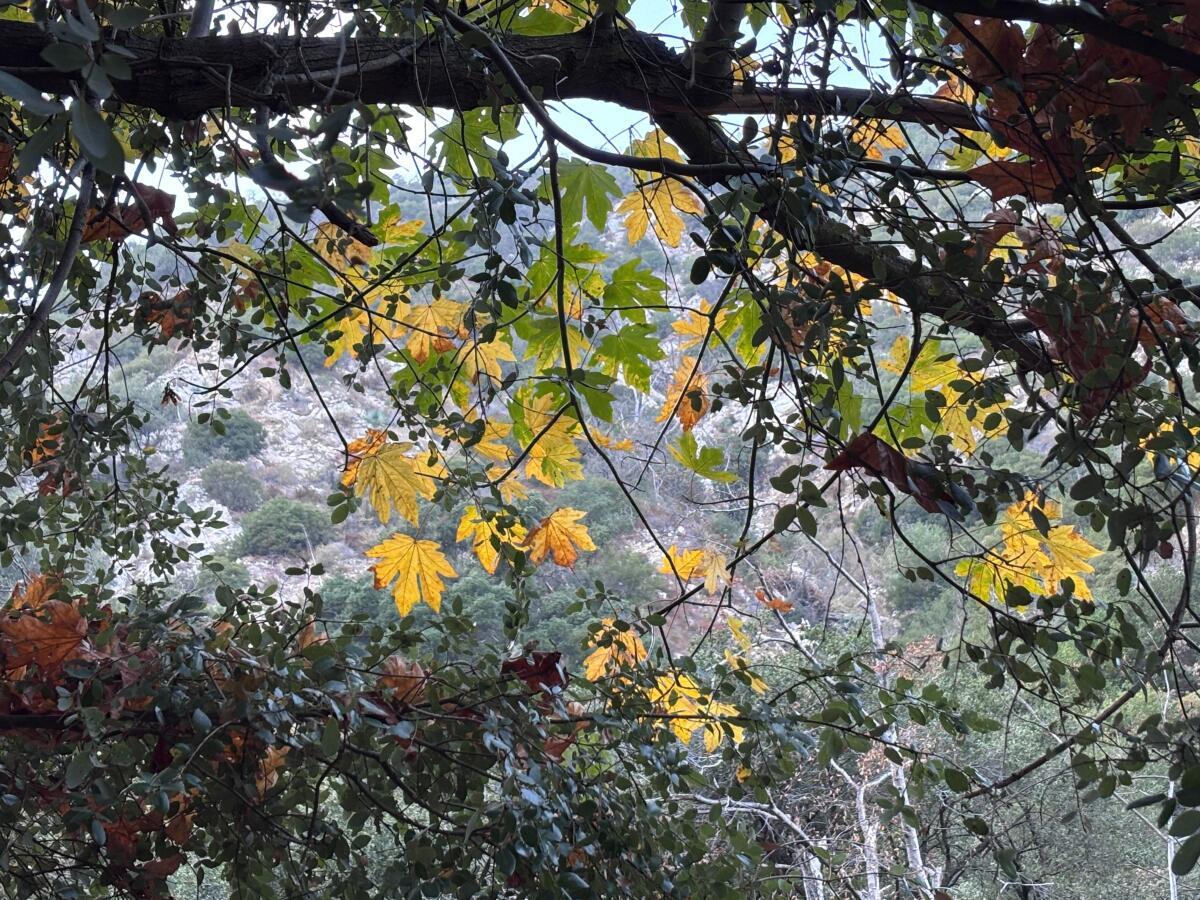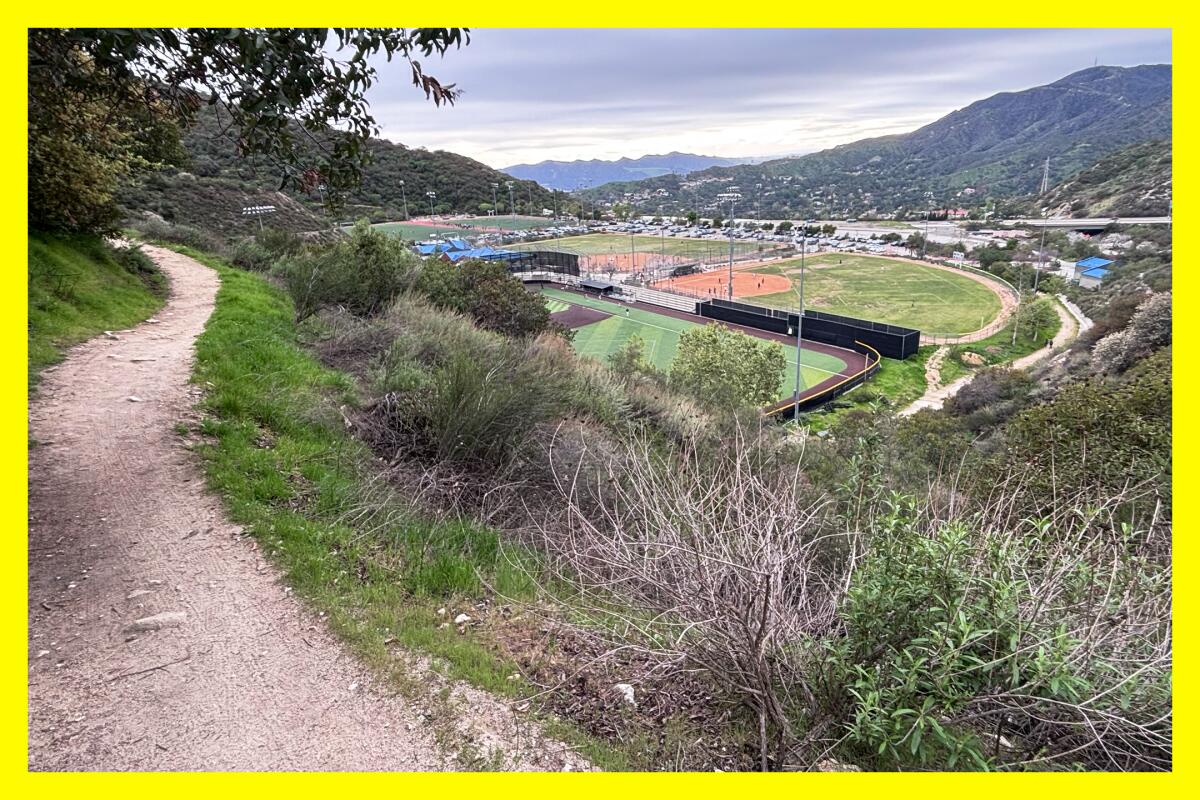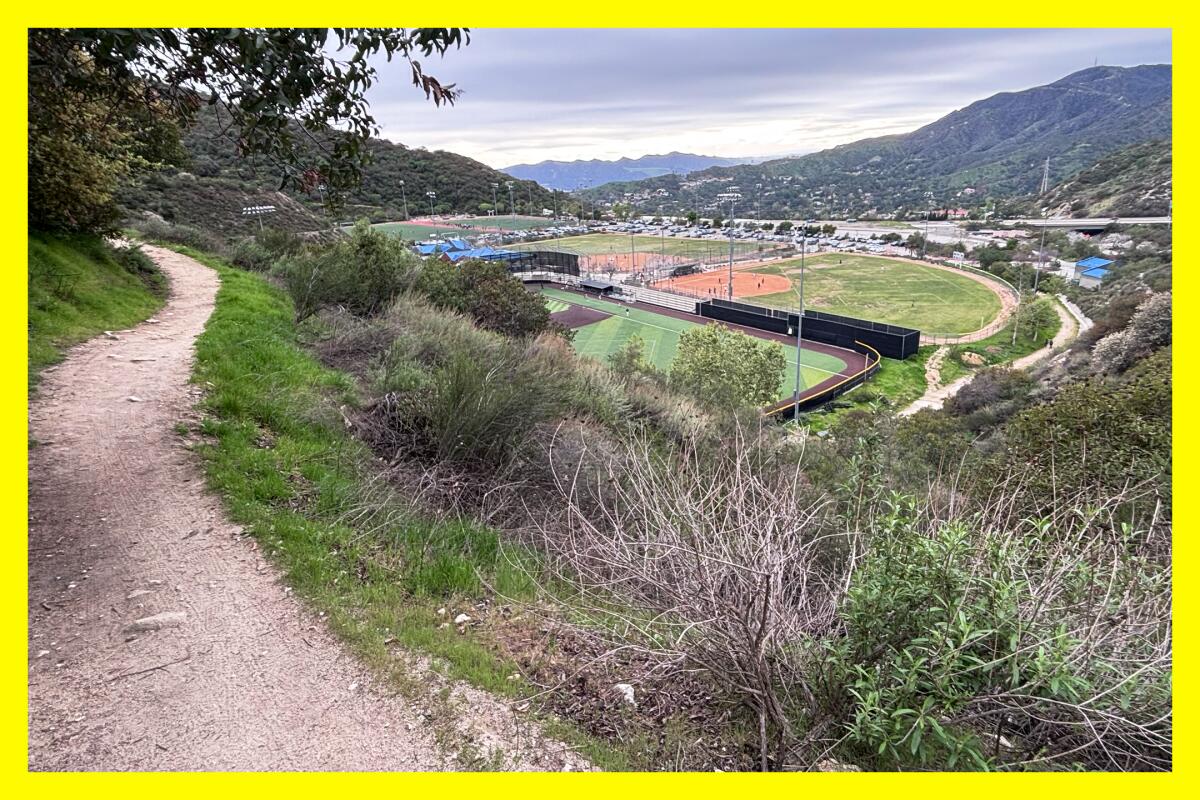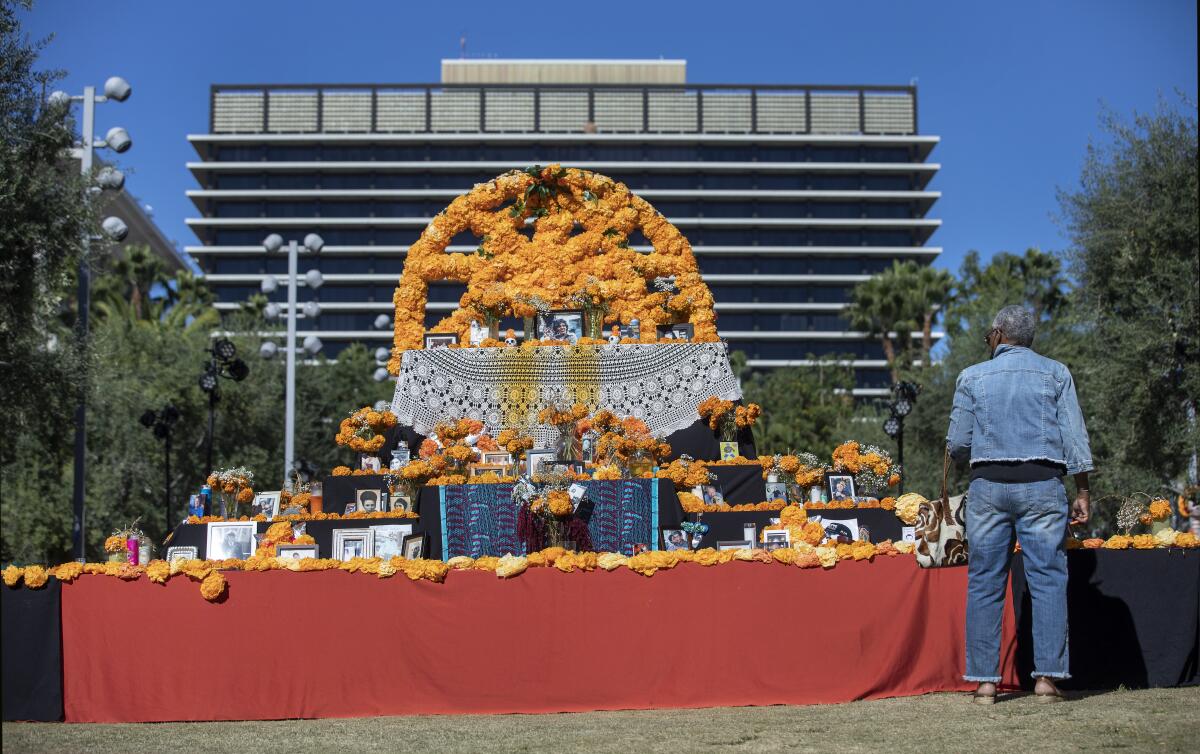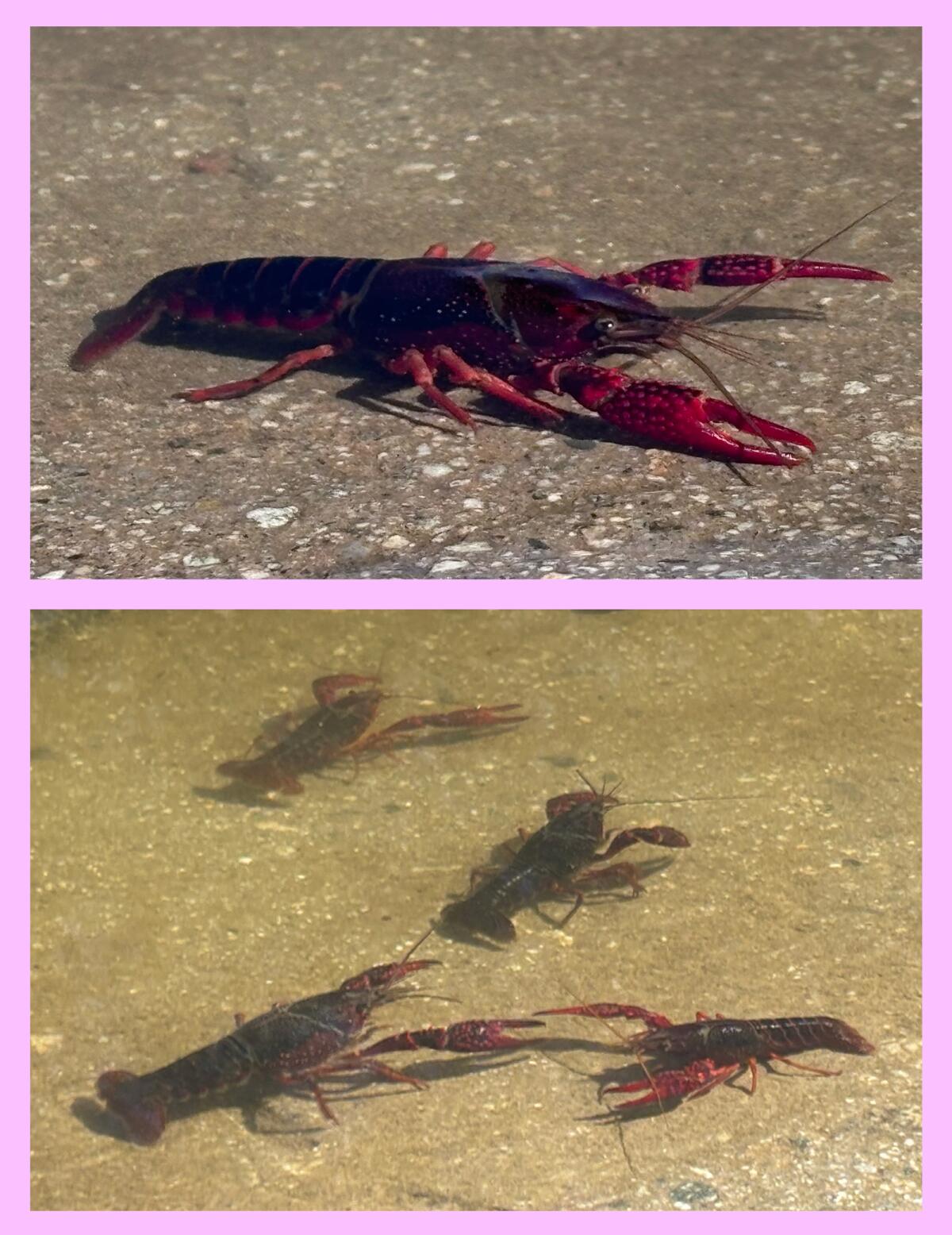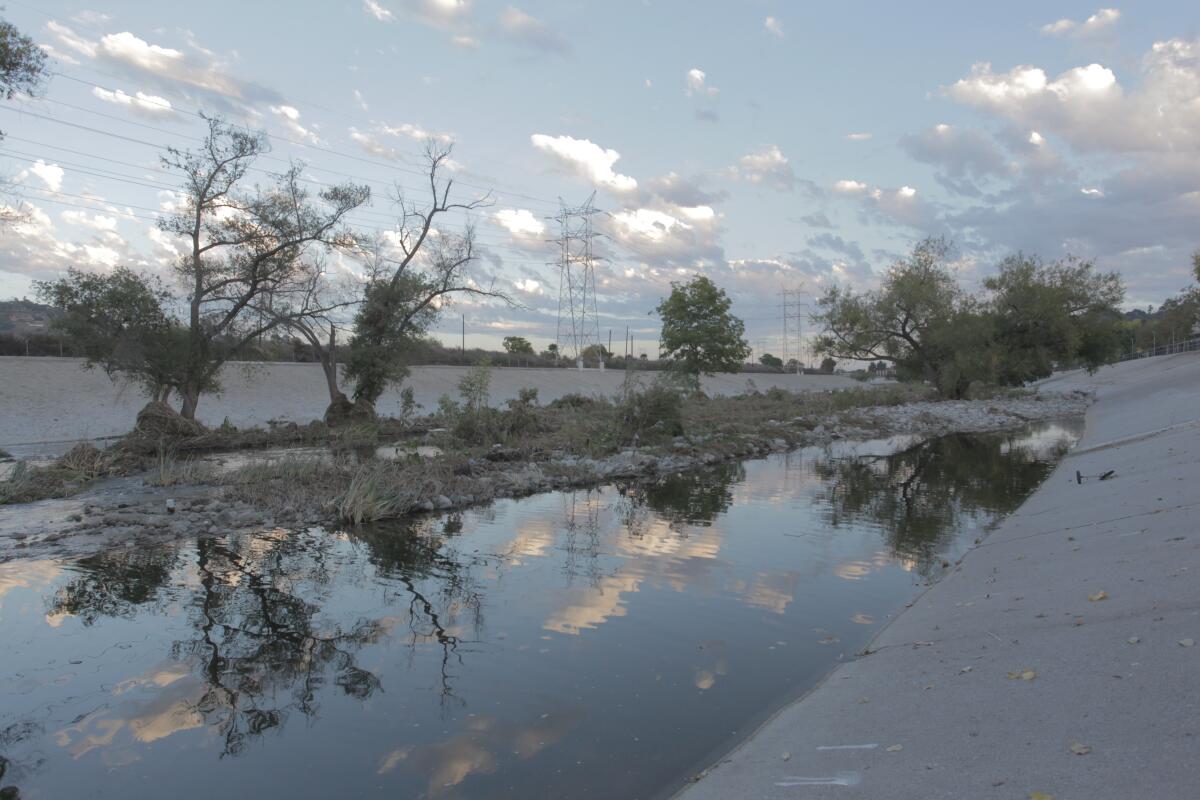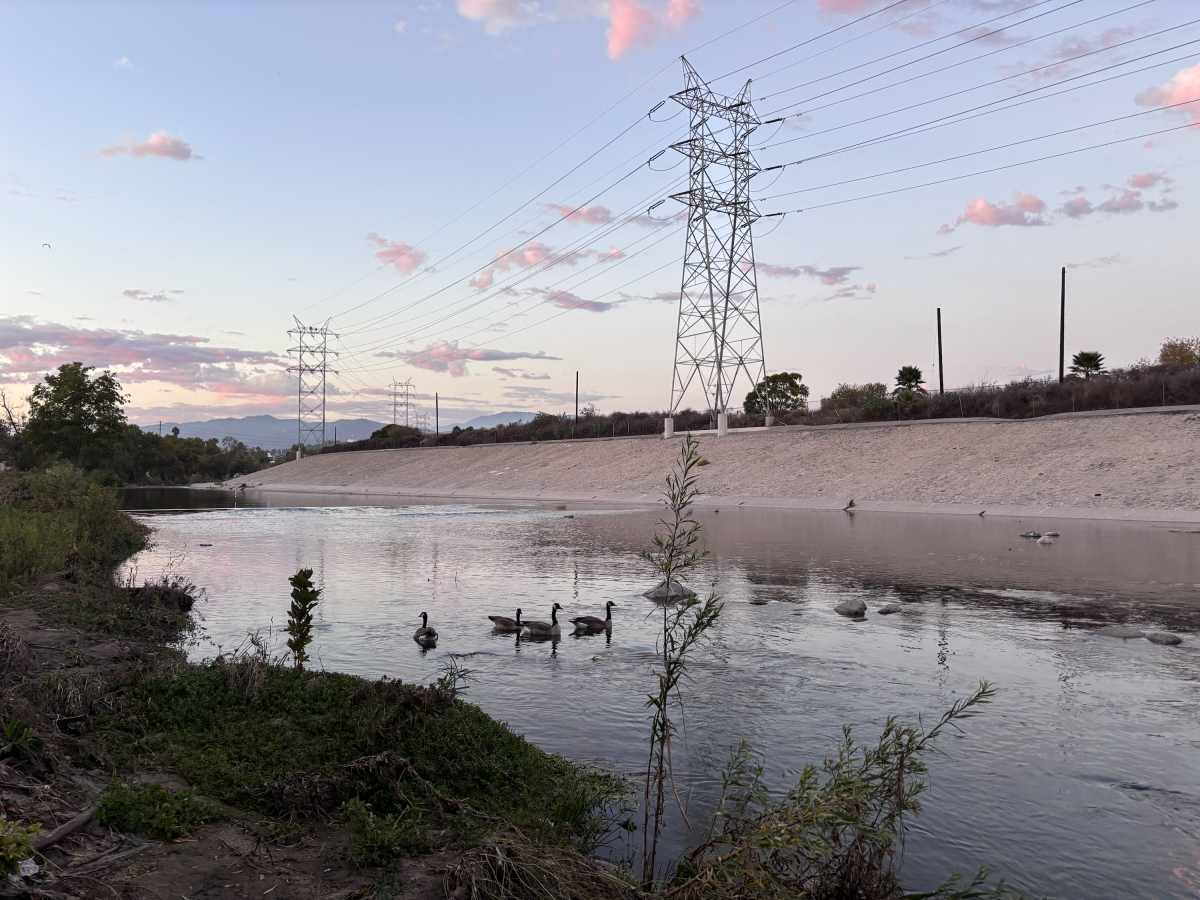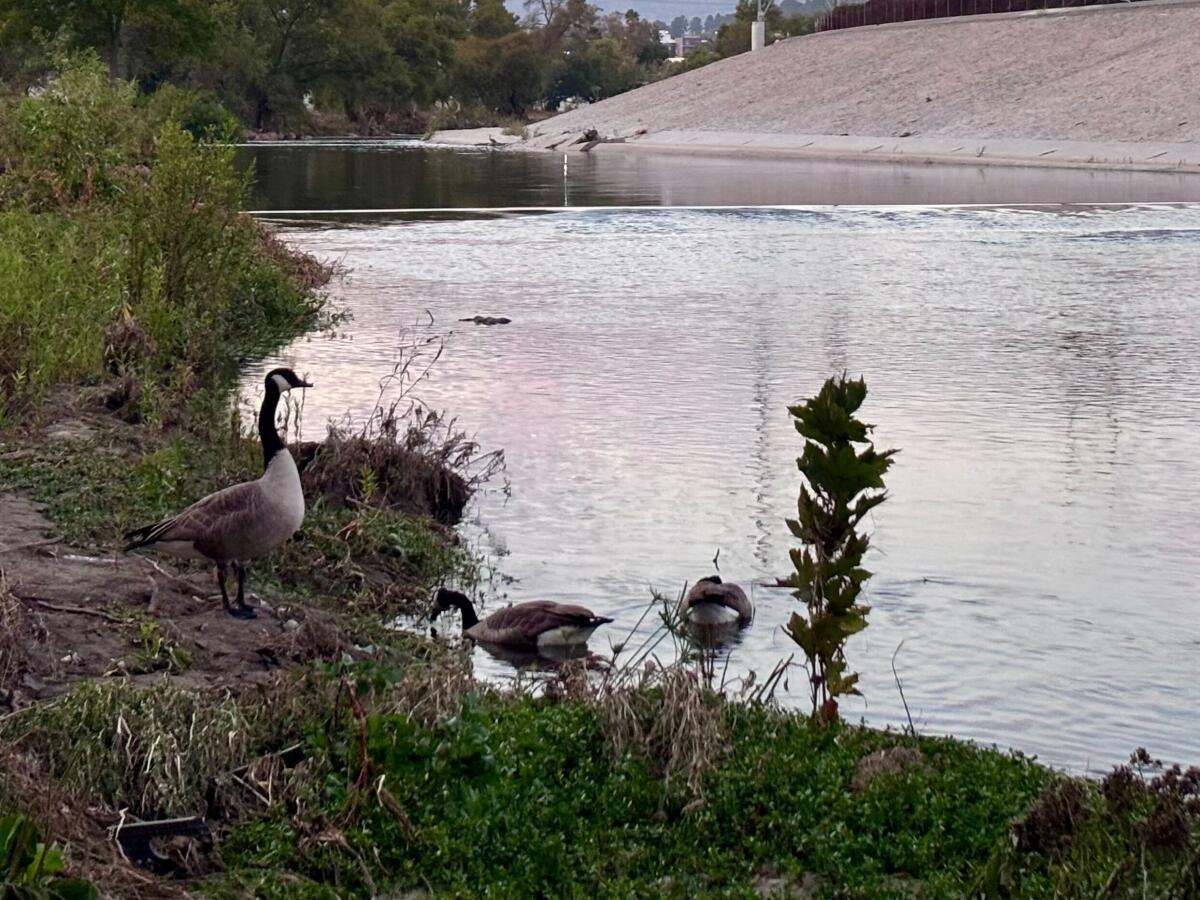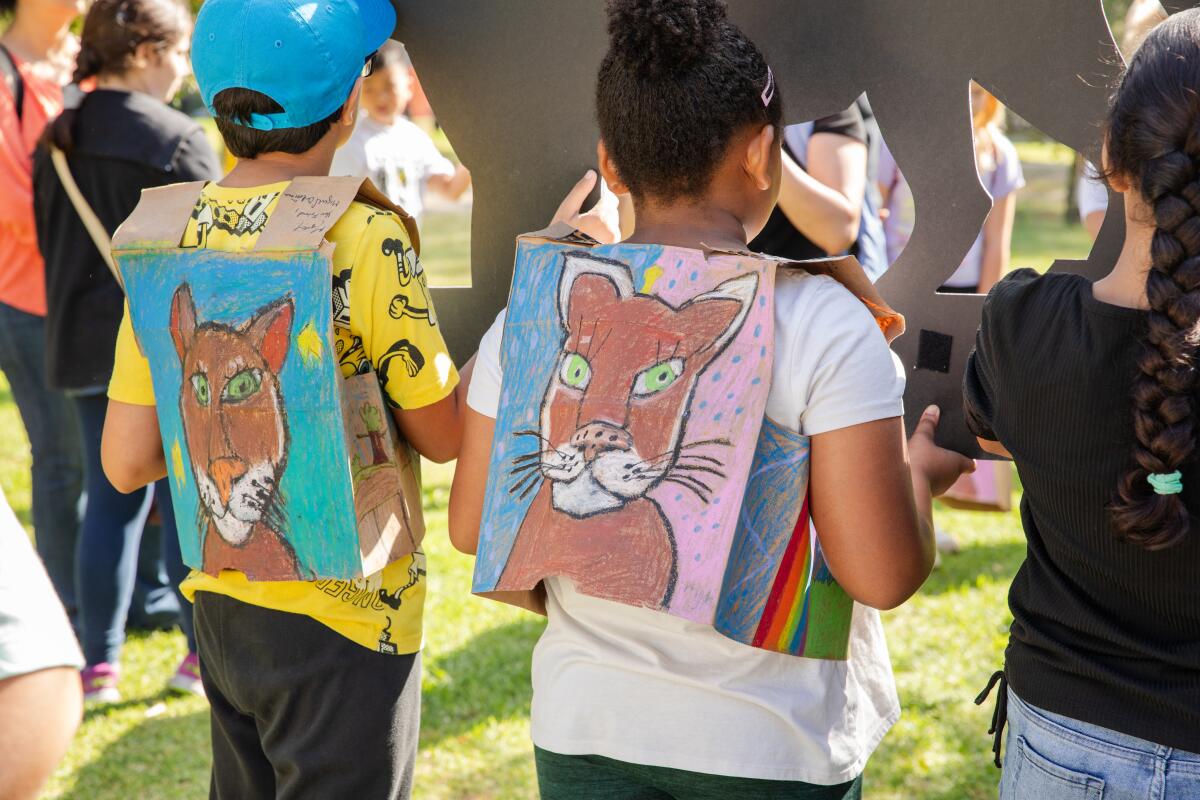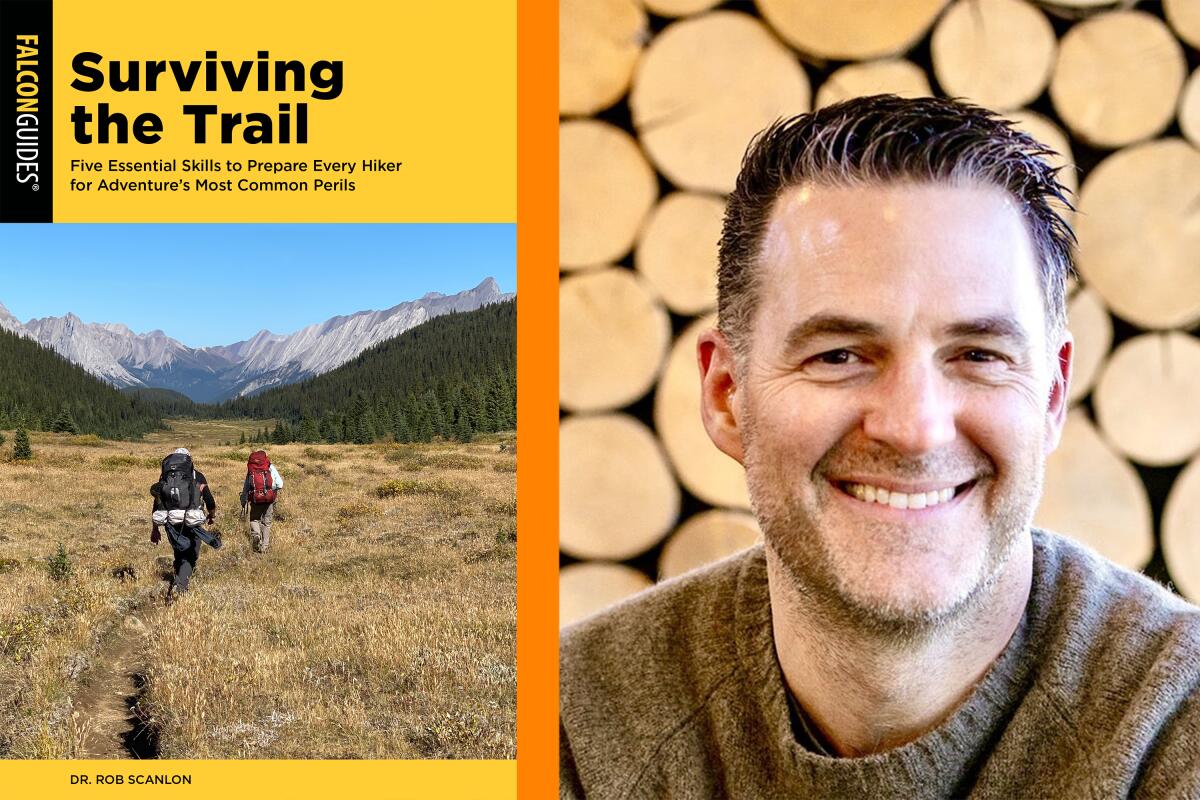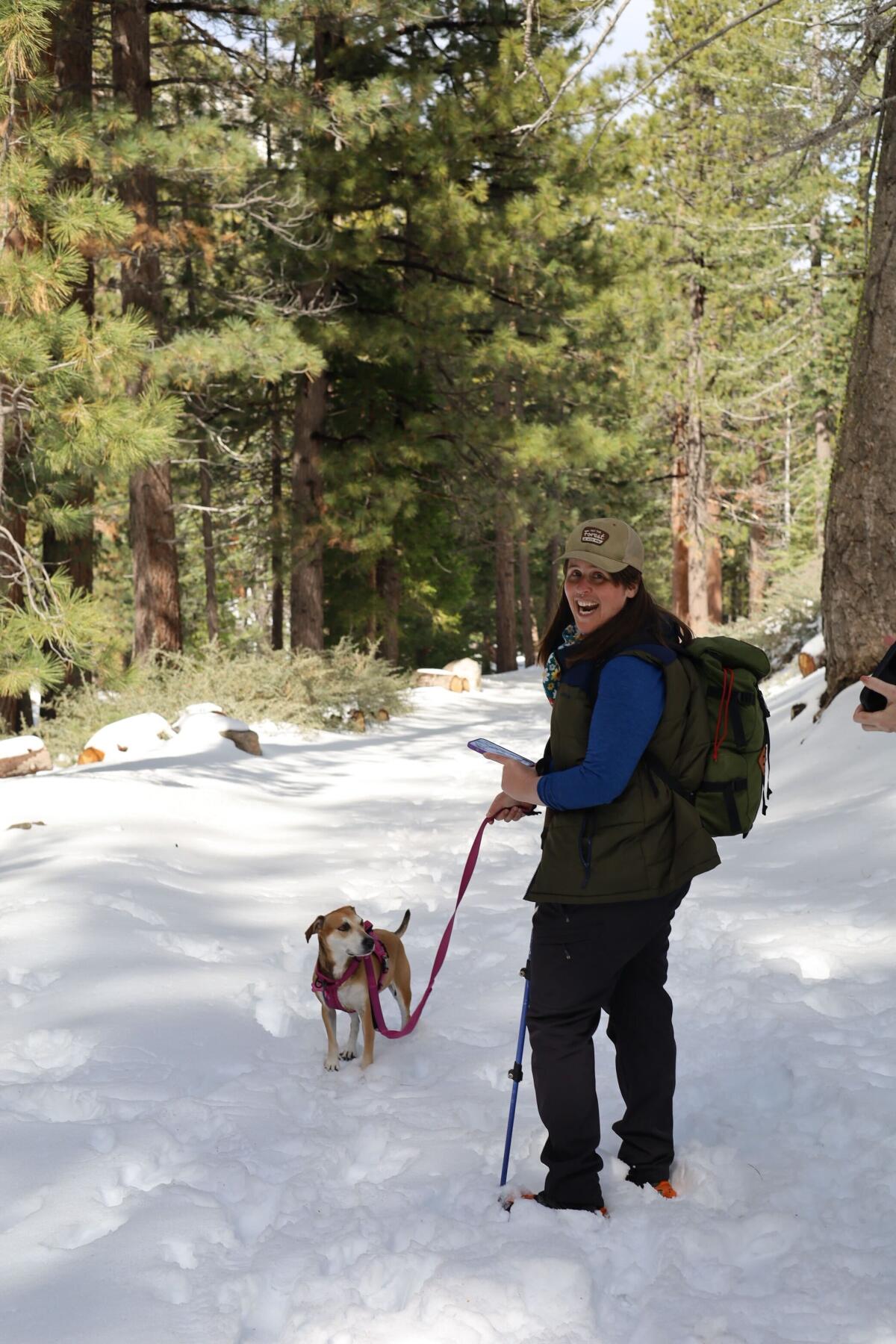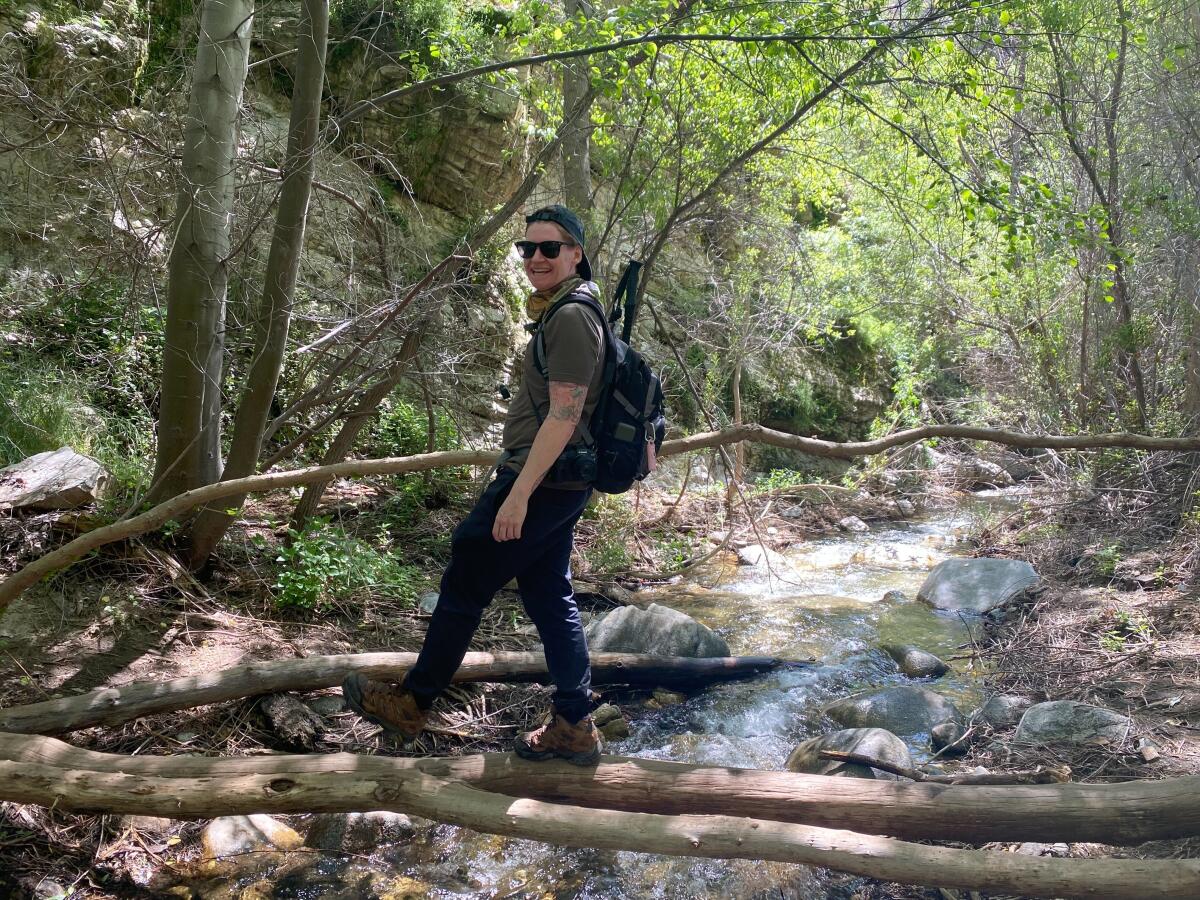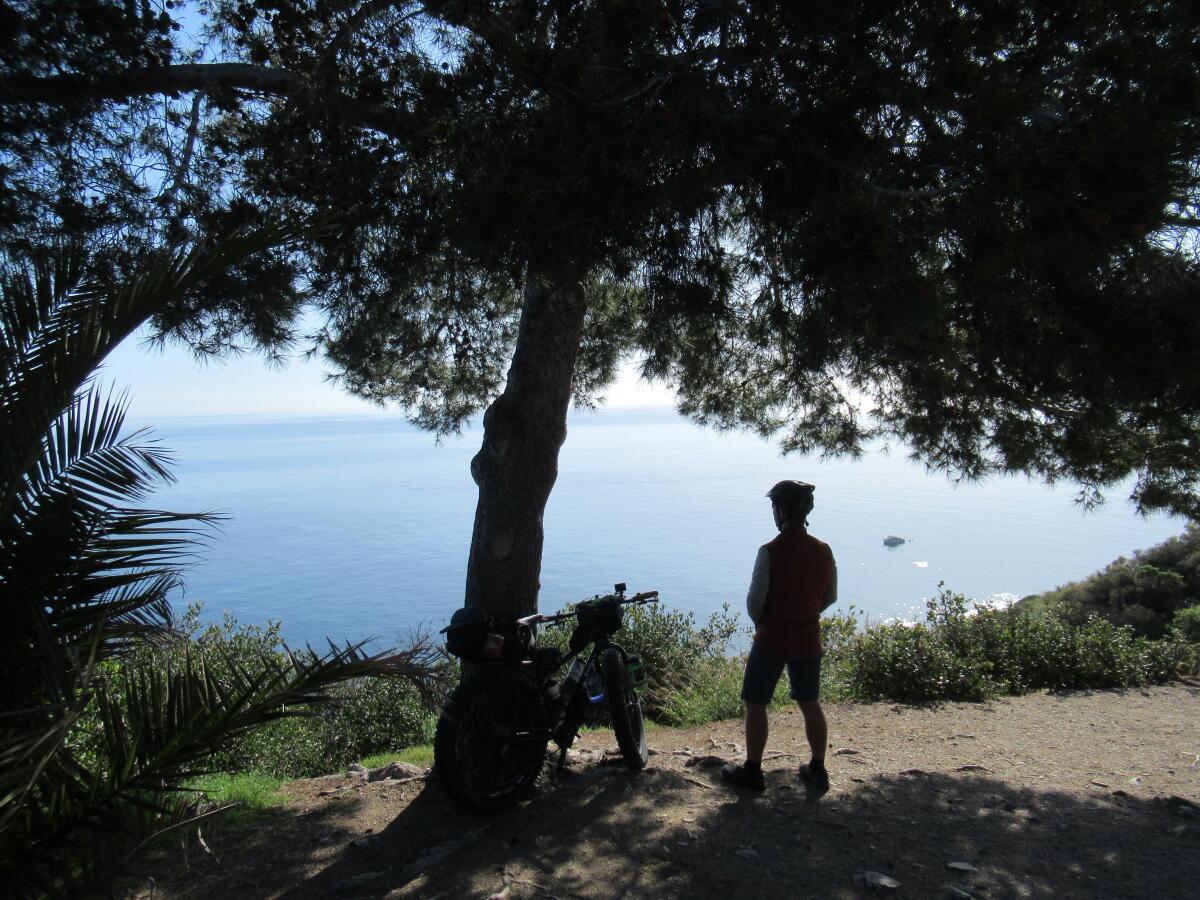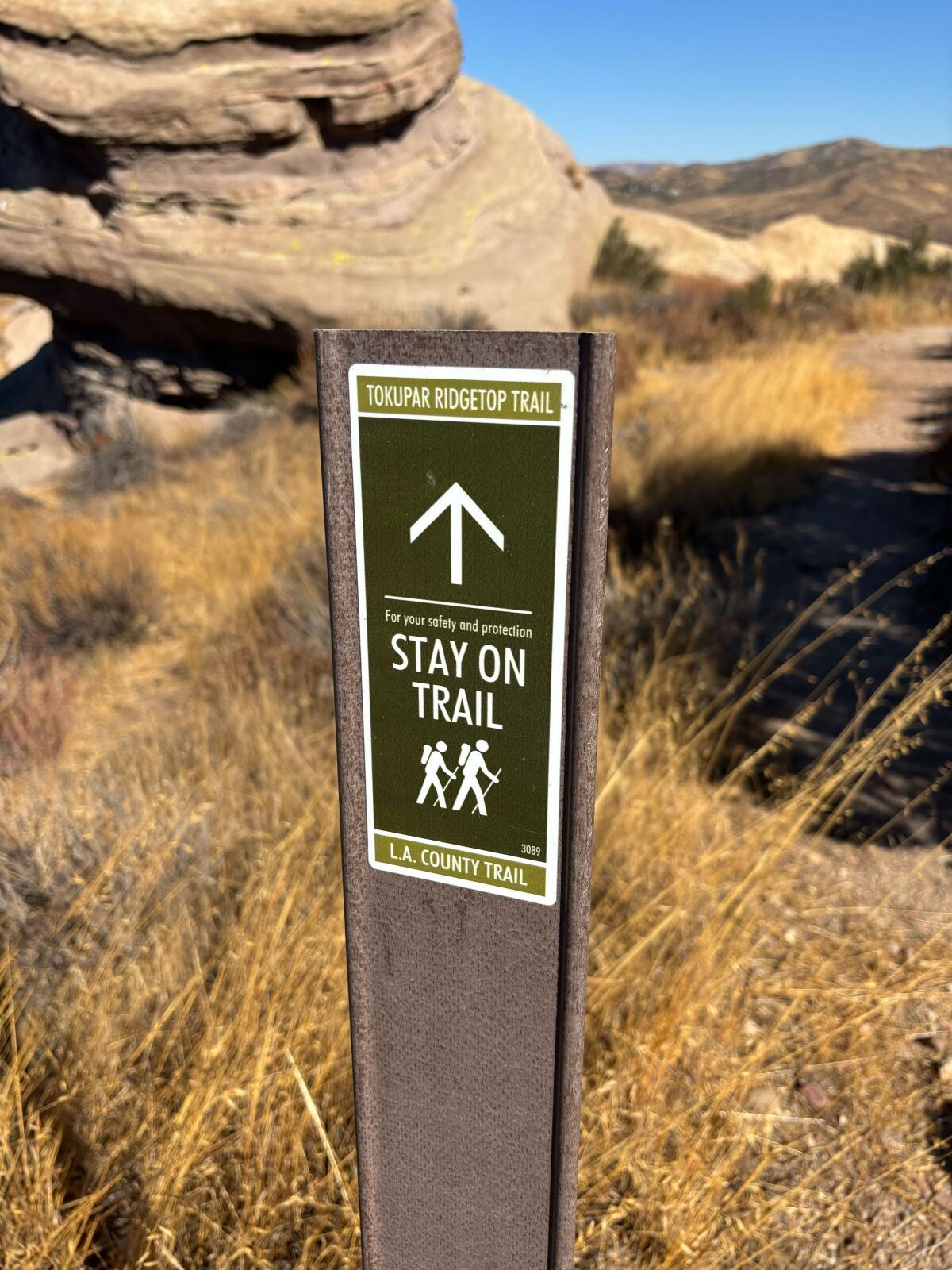Where and how to spot fall foliage around Los Angeles
I knew I’d chosen the right spot to hike as I drove past the yellow-leaved bigleaf maple trees near the trailhead.
I was in search of fall foliage near Los Angeles, and after a bit of research, I’d taken a chance by heading over to Big Santa Anita Canyon in Angeles National Forest to see if I’d get lucky.
I am now here to help you, hopefully, find the same good fortune on your autumnal adventures.
The idea that L.A. and its surrounding mountains feature trees with fall foliage can be hard to grasp for those who’ve been misled into believing that 1) L.A. is a desert (it’s not), and 2) The area doesn’t have seasons (it does!).
“L.A. was once wetlands fed by the cobweb streams and marshes of the L.A. River. It had oak woodlands and grassland valleys,” wrote Times columnist Patt Morrison. “Then, at least a thousand years ago, Native Americans were burning land to flush game and to make more oak trees grow to make more acorns to eat. It’s the last hundred-plus years that made the native landscape unrecognizable.”
Thankfully, it remains possible to observe the seasonal changes of our native trees in the wild lands around L.A. County. Below, you’ll find three hikes where you’ll see some level of fall foliage.
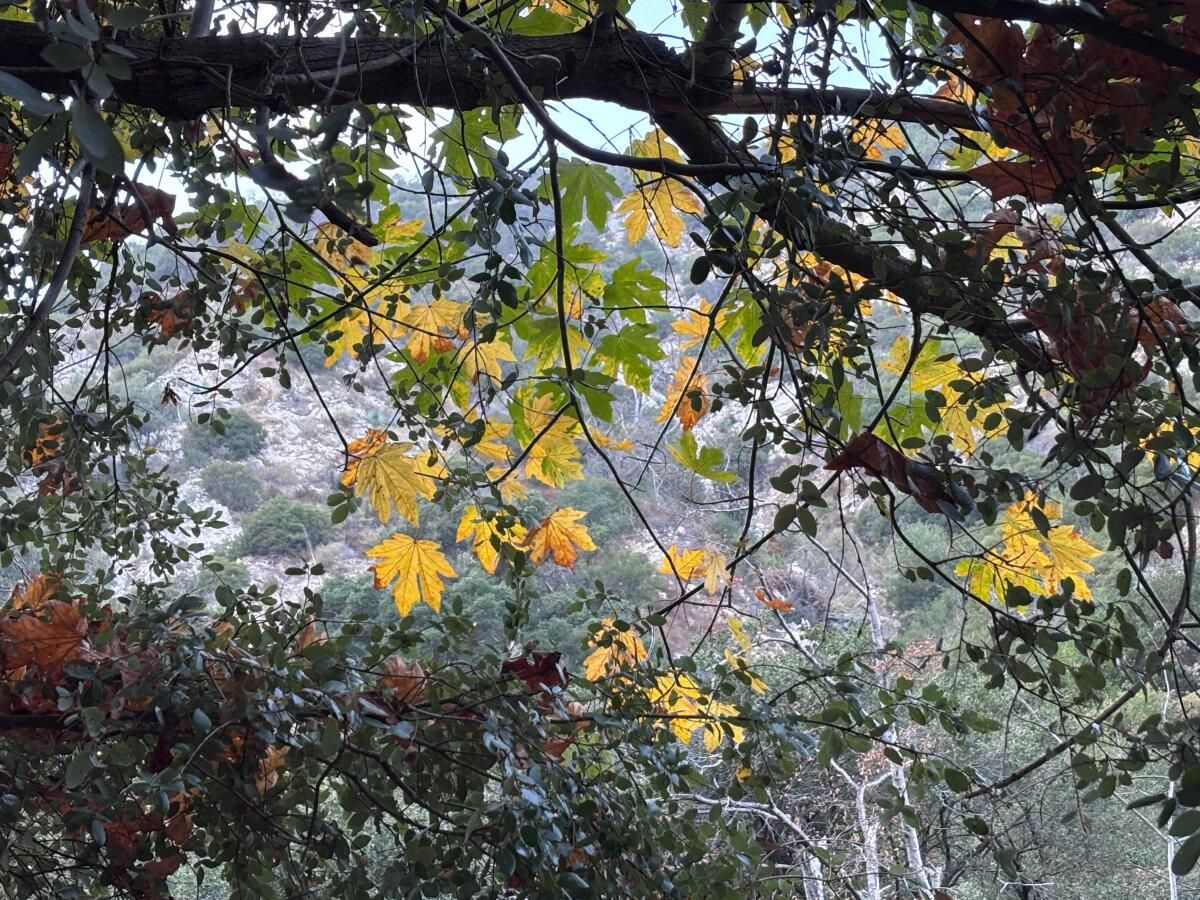
The leave of a bigleaf maple changing from bright green to brilliant yellow in Big Santa Anita Canyon in Angeles National Forest.
(Jaclyn Cosgrove / Los Angeles Times)
Before I dive into those hikes, though, I wanted to teach you how to find autumnal colors near you. My hope is that you can use this information to find off-the-beaten paths near you where the loudest thing is the pop of fall colors (rather than cursed Bluetooth speakers). Here’s how your local outdoors reporter finds hikes with fall color.
- Know your native plants: There are multiple native trees, shrubs and plants that evolve as the weather cools to produce orange, red, yellow and copper colors. Those include California sycamores (orange-yellow leaves), bigleaf maple (bright yellow), Southern California black walnut (yellow), valley oak (orange, yellow, brown), poison oak (red), California buckwheat (rusty red) and more.
- Find where the wild things grow: After identifying the native trees and plants that could (hopefully!) produce colorful leaves, you can log onto iNaturalist, a citizen science app and website, and search for them in a hiking area near you. For example, I searched bigleaf maple and noticed a few documented near the Lower Stunt High Trail. Might there be a bit of fall foliage there?
- Look for water sources: Water makes for happy trees. It’s a near guarantee that if you head to one of our still-flowing local rivers or streams — like a hike along the 28(ish)-mile Gabrielino Trail where it runs parallel to the Arroyo Seco or West Fork of the San Gabriel River — you’ll find fall foliage. (This includes hiking from near NASA’s Jet Propulsion Lab near Pasadena to the Brown Mountain Dam or from Red Box to the Valley Forge trail camp.)
- Set your expectations: As the fine folks at California Fall Color point out, it’s hard to predict when fall colors will pop. It depends on several factors, including the amount of daytime sunlight, nighttime temperatures and annual rainfall. That said, if you visit a trail, and it’s still quite green, consider returning a week later to see what you find. Nature is, lucky for us, a perpetual surprise!
I hope you use this knowledge to find fall foliage close to you that’s off the beaten path. That said, the three spots below are worth considering too and require no homework as I’m here to do that for you too.
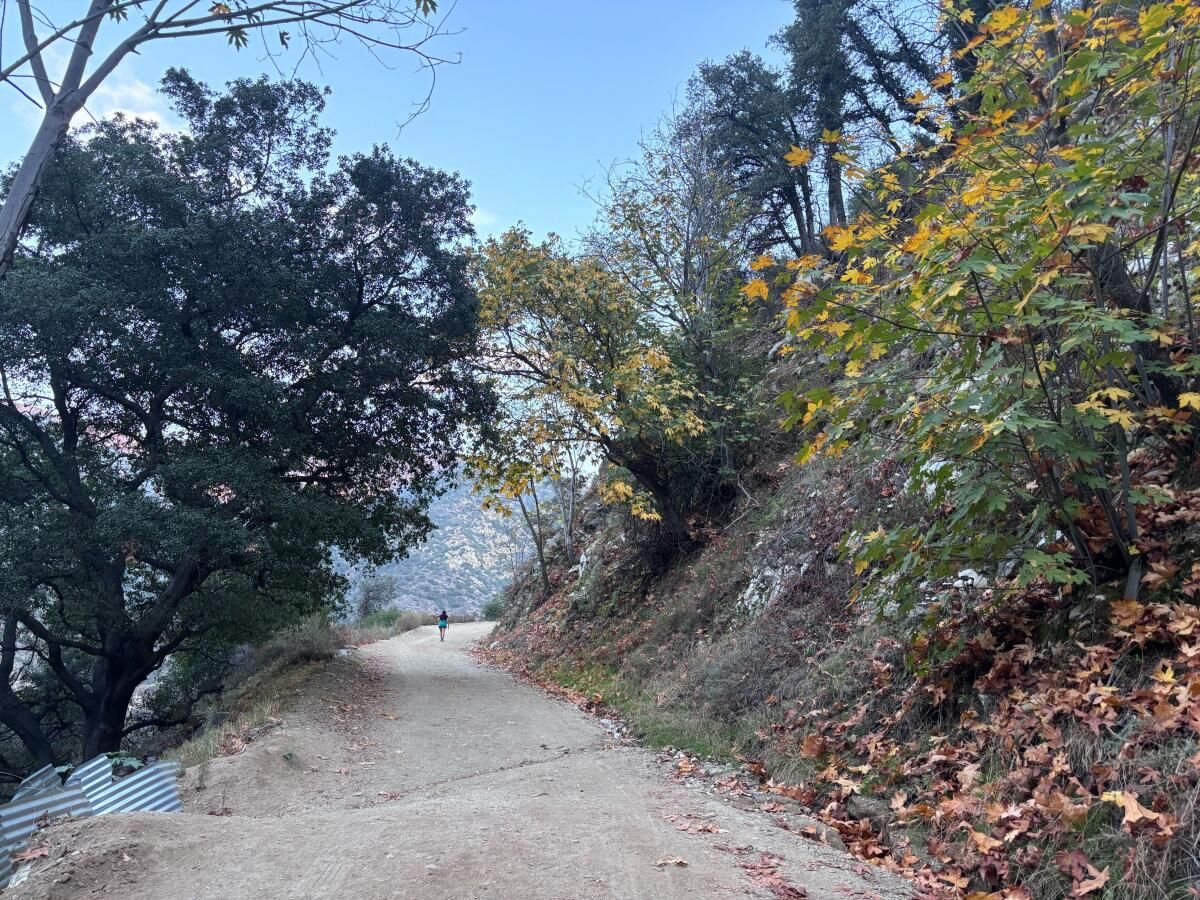
A hiker heads up the fire road at Big Santa Anita Canyon in Angeles National Forest.
(Jaclyn Cosgrove / Los Angeles Times)
1. Winter Creek Trail at Big Santa Anita Canyon
Distance: 5.2-mile loop trail
Elevation gain: About 1,230 feet
Difficulty: Moderate
Dogs allowed? Yes
Accessible alternative: Chantry Flat Picnic Area for leaf peeping
Upon parking at the Chantry Flat parking area — which is admittedly a challenge on the weekend — you’ll have multiple hiking options to venture through Big Santa Anita Canyon. Note: If you forget to buy an Adventure Pass, you can usually snag one at the Adams Pack Station, which is open Tuesday through Sunday.
I chose to take the Winter Creek Trail because it leads you through dense vegetation, and I hoped this would increase my chances of noticing leaf changes. My dog, Maggie May, and I headed north down the fire road near the restrooms and then turned after about 900 feet onto the Upper Winter Creek trailhead. As we zigzagged along this single-track route down the hillside, I looked down into the canyon and quickly spotted pops of yellow — at least nine bigleaf maples changing with the season!

(Photos by Jaclyn Cosgrove / Los Angeles Times)
I passed California bay laurel, rubbing their leaves to smell their spicy, pungent aroma, and noticed a branch with exactly one yellow leaf. The tree was considering changing with the season. Rusty red buckwheat, red poison oak and yellowish beige California brickellbush also grew along the trail. Rather than doing the entire Winter Creek trail, Maggie and I were racing daylight and turned around where the trail meets back with the fire road for just under a 2-mile adventure. The moon was rising over a ridgeline of the San Gabriel Mountains as we left.
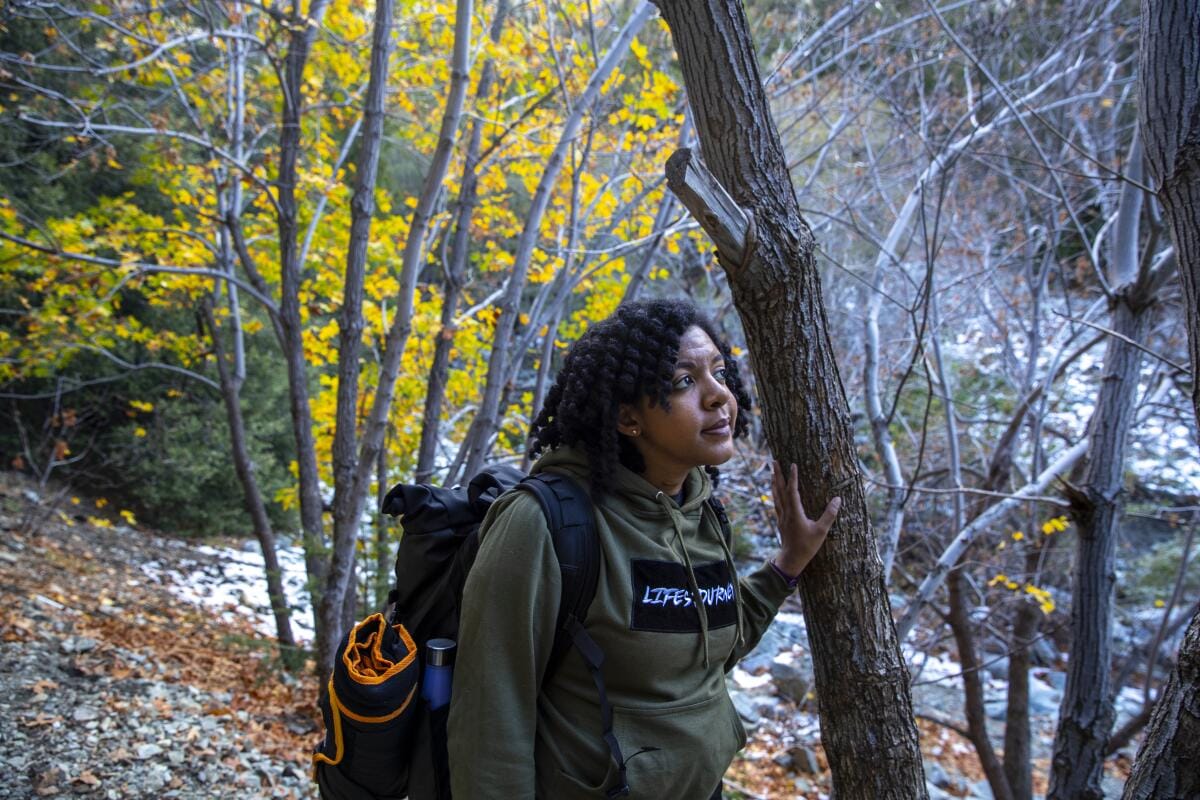
Hiker Christina Best pauses amid the fall foliage along the Icehouse Canyon Trail on a First Descents monthly meetup in the Angeles National Forest in 2019.
(Brian van der Brug / Los Angeles Times)
2. Icehouse Canyon to Icehouse Saddle
Distance: 6.6 miles out-and-back, or 7 miles if looping around on Chapman Trail
Elevation gain: About 2,600 feet
Difficulty: Hard
Dogs allowed? Yes
Accessible alternative: San Antonio Falls Trail. It’s wide and mostly paved, but steep.
The Icehouse Canyon Trail to Icehouse Saddle is a pristine route that takes hikers past the crystal-clear creek and up to Icehouse Saddle, where you’ll be surrounded by pine forest and have sweeping views of the Antelope Valley and Mojave Desert.
You’ll pass bigleaf maple, incense cedar, canyon live oak and more. The parking lot, which you’ll need an Adventure Pass to use, often fills up by 8 a.m. on the weekend, so it’s best to arrive early or try to visit on a weekday.
The higher you climb, the more likely you’ll encounter snow this time of year. If you don’t plan to pack crampons, please turn around once you reach snow.
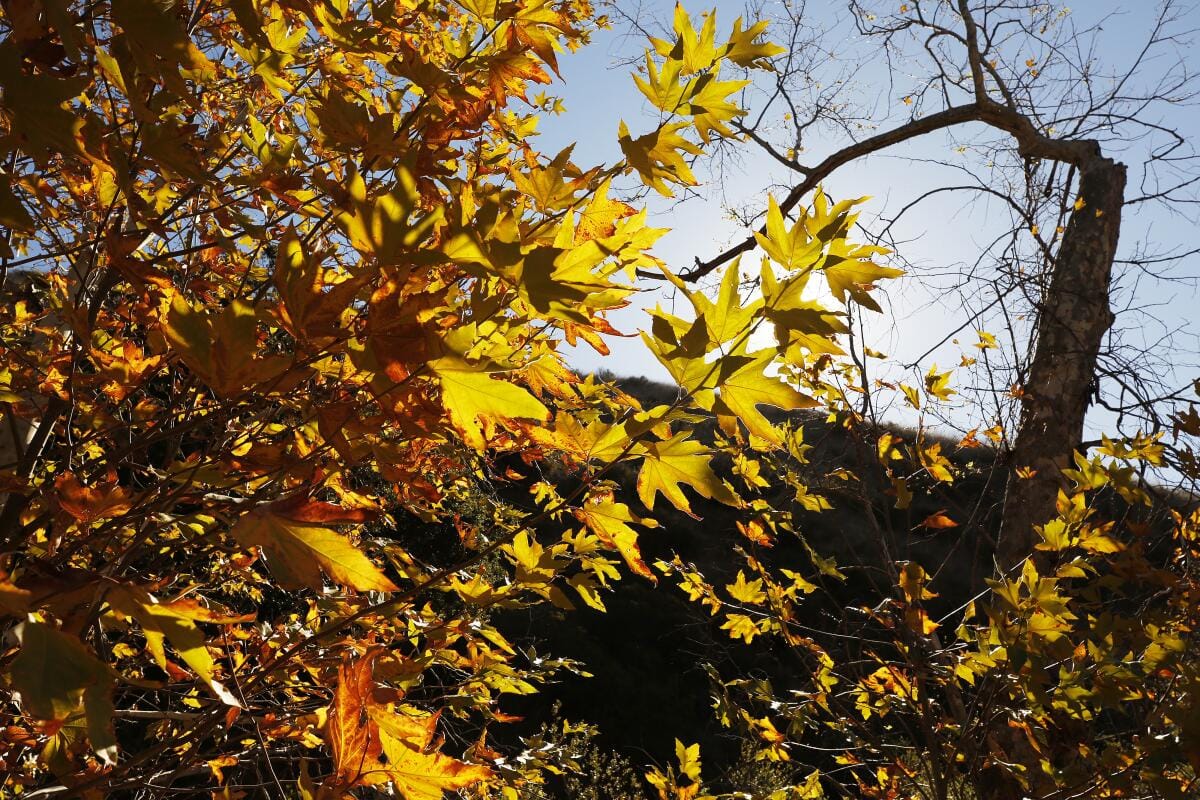
Western sycamore trees like these grow in the aptly named Sycamore Canyon in Point Mugu State Park.
(Al Seib / Los Angeles Times)
3. Sycamore Canyon Trail in Point Mugu State Park
Distance: About 6 miles
Elevation gain: About 200 feet
Difficulty: Easy
Dogs allowed? No
Accessible alternative: The trail is mostly wide and flat, making it easier to navigate.
The aptly named Sycamore Canyon Trail is a fire road hike that takes you through the lush Point Mugu State Park. You’ll immediately see the limbs of large sycamore trees stretching over and around the trail. If conditions are right, they should be among the trees featuring fall foliage.
The trail also features Southern California black walnut, black sage, the fragrant California sagebrush and several other aromatic delights. Regardless of what you see, it’s a treat to be among pristine coastal sage scrub and other native habitat. And if the mood strikes, the beach is nearby. That sounds like a true Southern California fall day.
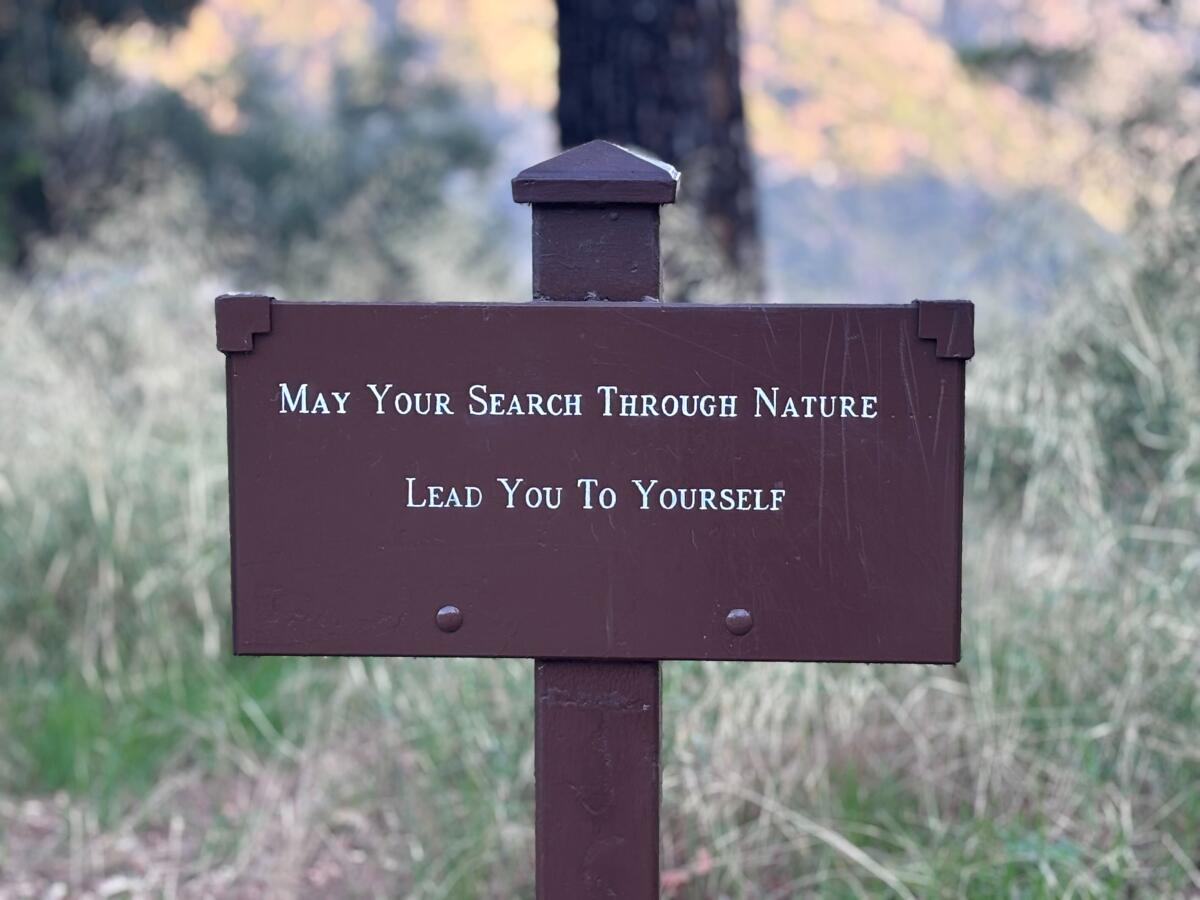
One of a handful of introspective signs at Big Santa Anita Canyon.
(Jaclyn Cosgrove / Los Angeles Times)
I hope you spot gorgeous fall colors on your adventures this weekend.
If you do, please feel free to reply to this email (if you’re a newsletter subscriber) with a humble brag with your photos. I love hearing from you!

3 things to do
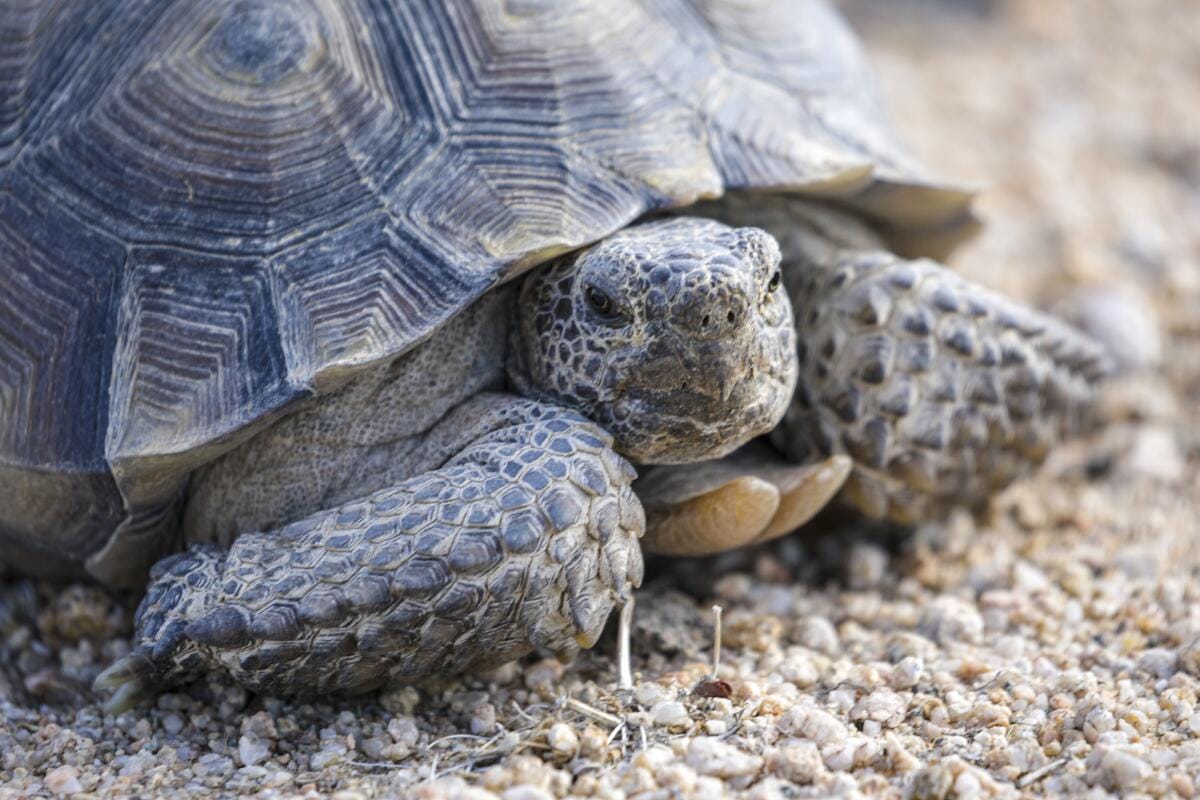
A desert tortoise shuffles about the Desert Tortoise Research Natural Area in California City, CA.
(Irfan Khan/Los Angeles Times)
1. Celebrate desert tortoises in Palm Desert
The Mojave Desert Land Trust will be on hand from 10 a.m. to noon Saturday at the Living Desert Zoo & Gardens in Palm Desert to celebrate Desert Tortoise Day. The organization will host tortoise-themed activities, including a scavenger hunt and a meet-and-greet with Mojave Maxine, a tortoise who lives at the zoo. Learn more at livingdesert.org.
2. Take trash out of wetlands near Marina and Playa del Rey
Volunteers are needed from 9:30 a.m. to noon Saturday at both north and south Ballona Creek to pull trash from these important wetland habitats. Participants must wear close-toed shoes. Register for either location at ballonafriends.org.
3. Tend the land with new friends in L.A.
Coyotl + Macehualli will host a volunteer day of weeding, planting and mulching from 9 a.m. to noon Saturday along a hillside in El Sereno. The exact coordinates will be provided to participants. Learn more at the group’s Instagram page.

The must-read
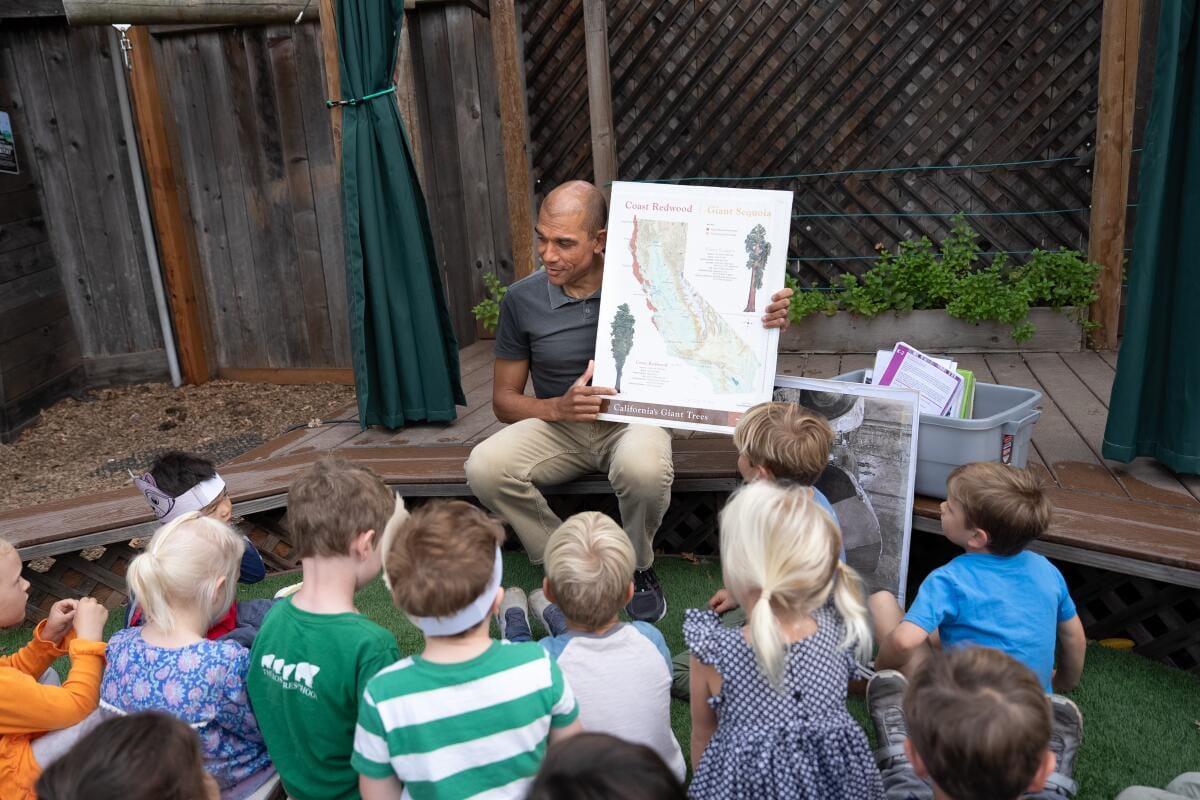
Adrian Boone, a Muir Woods National Monument Park Guide, teaches children about the forest at the Ross Preschool.
(Paul Kuroda / For The Times)
Park rangers are among government workers furloughed while the United States experiences its longest government shutdown. Times staff writer Jenny Gold wrote about how, in an effort to provide some income to these rangers, the San Francisco Bay Area-based Grasshopper Kids is paying out-of-work rangers to educate children at area schools. Riley Morris, who works as a seasonal interpretive ranger at Muir Woods, said they wondered whether the children sitting inside classrooms or school auditoriums would still be interested in learning about redwoods without the “magic” of sitting in a park among the towering giants. “But it’s just been so cool seeing that when all of that is taken out of the equation, these kids are still just so totally glued to like the information that I’m sharing with them,” Morris said. “You can just tell they’re almost vibrating with excitement.”
Happy adventuring,

P.S.
Do you have a nature lover on your holiday gift list? (Hi, Mom!) If so, check out this curated list of outdoors-themed gifts that Times staff writer Deborah Vankin and I wrote together for this year’s L.A. Times Holiday Gift Guide. I loved trying out the Six Moon Designs hiking umbrella, which I am eager to take on desert hikes this winter and spring. The Nomadix Bandana Towel is almost always either around my neck or in my pocket on every Wild hike. And the moment I finish writing this newsletter, I’m going to go find my North Face mules, which I also included on the list. They’re perfect for chilly evenings on the couch — or by a campfire. And as a bonus, read our list from last year’s Gift Guide, which doesn’t have a single repeated item. Boundless ideas for your boundless adventurers!
For more insider tips on Southern California’s beaches, trails and parks, check out past editions of The Wild. And to view this newsletter in your browser, click here.
